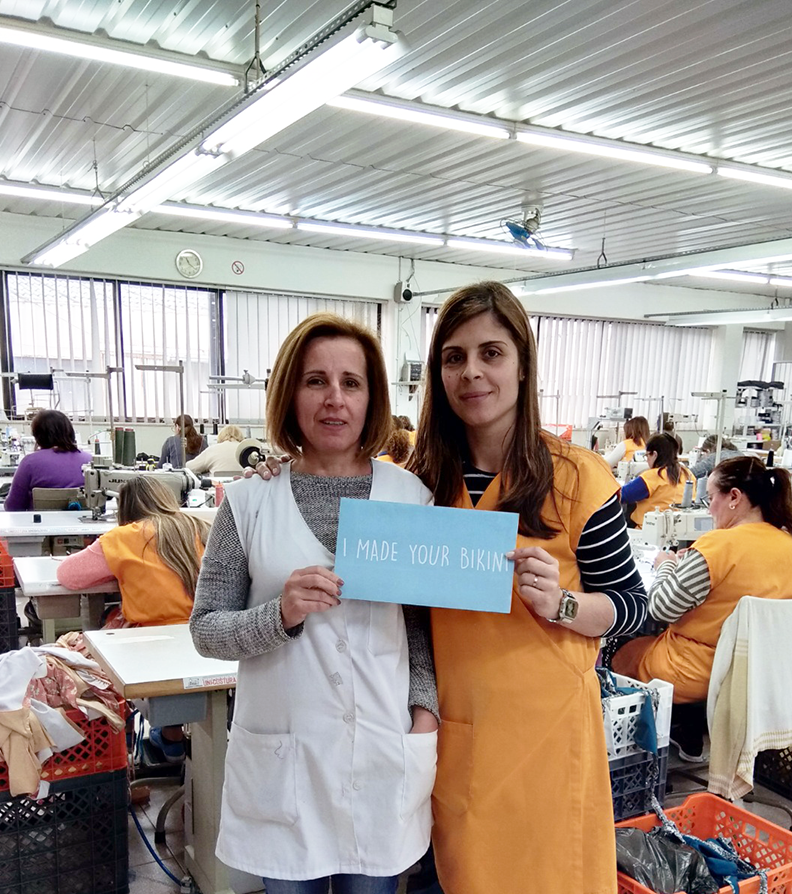MADE IN PORTUGAL
Made Consciously
Made Transparently
MADE IN PORTUGAL Made Consciously Made Transparently
A closer look at numbers!
After China’s membership of the World Trade Organization at the end of 2001, after the quotas were lifted in 2005 and after the safeguard period ended in 2008, China became a preferred sourcing destination for most brands. Consequently, Portugal saw a reduction in the industrial output, number of businesses, export values and employment in the textile and garment industry. In recent times it came to an all time low in 2013.
Today the production output is 43% higher than in 2013, which was a turning point. Portugal gained confidence in a new strategy with a focus on quality and sustainability, making the Portuguese market a very predictable, credible and stable sourcing destination. Investments in the sector increased almost 8-fold from 2012 to 2013 and are today 15 times higher at €229.4 million/year. Confidence indicators in the industry have been stable, export values have been stable and productivity has been on a constant rise with a tendency to a steeper increase from 2020. The COVID-19 pandemic caused a dip in all indicators, but already from 2021 the tendencies of improvement continued.
Based on numbers of 2020 the cost per worker in the manufacture of wearing apparel was 3x higher in France and 2x higher in Italy compared to Portugal, which is one of the reasons why Portugal stays competitive for premium and luxury brands. Italy and France has a higher apparent productivity, however, Portugal has a much stronger industrial infrastructure, which is another important factor in our competitiveness.
The Portuguese Constitution (art. 59, paragraph 2 a)) establishes the obligation of the state to set and update a mandatory national minimum wage. The general law applicable since 2009 is the Labour Code 2009 (Law 7/2009, arts. 273, 274 and 275) and during the last 10 years there were no substantial changes in the minimum wage regulation.
The minimum wage rate is defined monthly and updated annually. According to the law, the monthly minimum wage is due for 14 monthly payments, as all employees are entitled to the Christmas bonus (a 13th monthly payment) and to the Holiday bonus (a 14th monthly payment, which is paid in addition to the remuneration for the holiday period).
The mandatory minimum wage is generally applicable. There are no exemptions. Workers cannot be paid lower than the minimum wage. Non-compliance with minimum wages is considered a very serious offence, and a fine can be imposed. The minimum wage for 2025 was set at €870 or €1.015 including the 2 extra bonus salaries divided by month.
The manufacturers Win-Win Textiles work with all pay higher wages to the production staff than the minimum wage, thus securing a reasonable living wage.
Looking at indicators for gender equality in Portugal (in total, not only in our industry) measured by employment, salary and position, we still have a lot to do. There is only a gender employment gap in Portugal among the 20-64 year old of 5.6%. Women have an employment rate of 75.5% and men 81.1%. The EU average gap is of 10.2%, Italy 19.5%, Greece 19.8%, Turkey 38.5% and France at the level of Portugal with 5.5%. The gender pay gap (in unadjusted form), however, is 12.5% in Portugal, slightly below the EU average, better than Greece and France (17.9% and 13.9%). However, not nearly as good as Italy with 4.3%. Board member positions held by women in Portugal account for 34.9%, and 16.9% woven are in executive positions. This is much better than Turkey with 18% for board members and 12.1% for executives, however, far from an acceptable situation. The level of female board members is at the level of the EU average, the level of France (46.1%) and Italy (43%), however, considerably better, but the level of female executives is below the EU average of 22.2%.
Seats held by women in the Portuguese parliament represent 36% - to compare, the proportion is 44% in Denmark, 38% in France, 35% in Germany, 32% in Italy, 27% in China, 23% in Greece, 20% in Turkey and 15% in India.
The data set on women’s representation in governments was taken from the World Bank Open Data source.





